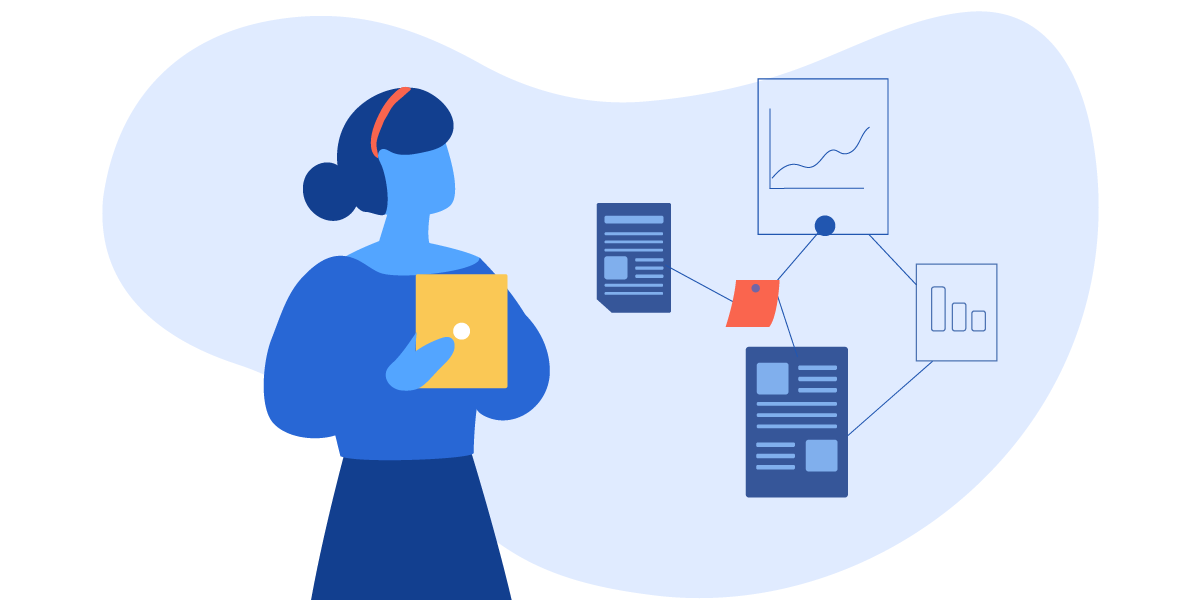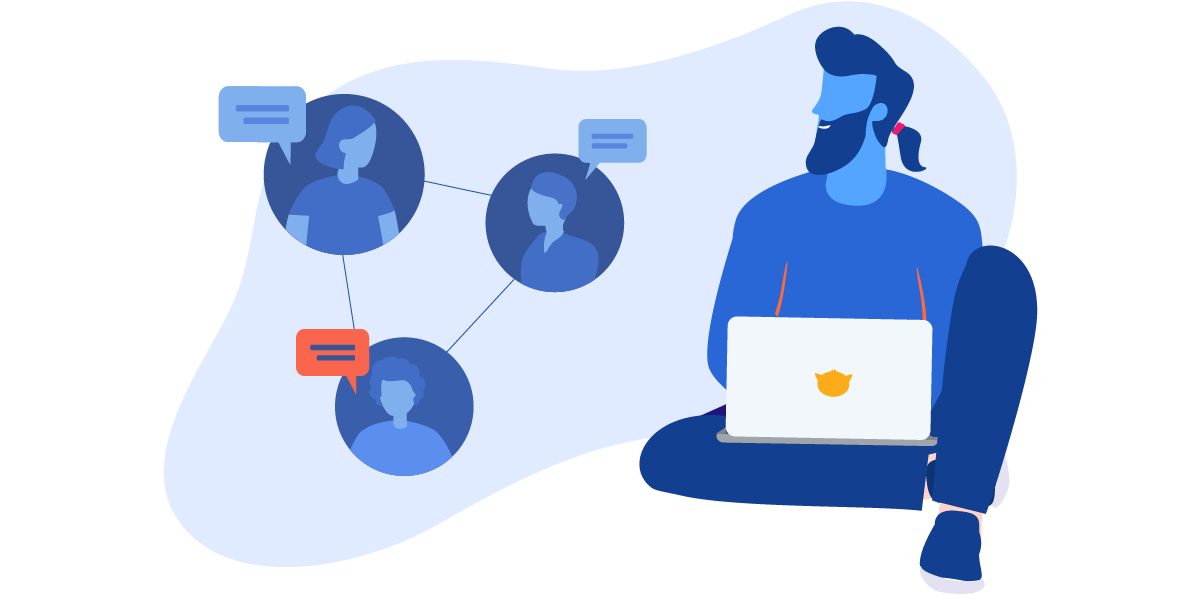How listening to our 4.1 million users inspired a new product idea

Years ago, I was waiting in line at a paddle sports shop.
People were renting kayaks and canoes and getting fitted for life jackets. It was a brilliant, sunny day and the air buzzed with excitement.
On the back wall, I noticed a framed print that read:
“We don’t sell boats. We sell time on the water.”
Clever — and true. People don’t desire products, they desire feelings that products give them.

Back at the rental shop, very few people care about hull design or reinforced resin paddles.
They want to soak up a summer afternoon. Spend time with people they love. Feel the warm breeze and stretch their desk-bound muscles.
Those two framed sentences stayed with me, and they reflect how I think about my company, JotForm:
We don’t provide online forms. We make organizations more productive.
It’s a deceptively small difference. After all, who cares about forms? I started the company 12 years ago, and even I’m not passionate about forms.
What I do care about, though, is helping our 4.1 million customers to run smarter, more productive businesses.
We operate in a crowded industry, where even Google is gunning for our market share.
And our competitors are always pushing to “elevate” forms. They write edgy web copy about AI and conversations. Some even claim that forms are dead, while others try coining one fancy term after another.
That’s fine. They can focus on the cool factor.
But our customers just want to do business, and do it well.
How do we know? By asking — and listening closely.
Focusing on the customer (not the competition) brought us over 1 million new signups in 2017 alone.
Across every industry, almost nothing will have a bigger impact on your business than listening to the people you serve.
When you listen to your customers, you can create new opportunities on your own terms, instead of fighting for space in a crowded ring.
And it starts with what you’re really offering:

Define your true value
In a 2013 memo, Slack CEO Stewart Butterfield outlined his vision for the product just two weeks before its preview release.
He reminded the team that they were selling organizational transformation, not software:
What we are selling is not the software product?—?the set of all the features, in their specific implementation?—?because there are just not many buyers for this software product.
We’re selling a reduction in informational overload, relief from stress, and a new ability to extract the enormous value of hitherto useless corporate archives. We’re selling better organizations, better teams.
That’s why what we’re selling is organizational transformation.
Five years later, Slack, the fastest growing business app of all time, has 8 million daily active users. Staying laser-focused on their true value has helped the company to achieve rapid growth and adoption.
And while Butterfield’s memo makes sense in hindsight, it can be surprisingly tough to uncover your distinctive value; your version of “time on the water.”
That’s because you’re too close to the product or service. You and your team are probably worried about micro-interactions and how the branding looks online.
Here’s where listening comes in.

User research is your biggest weapon
Even when you know what your product offers and what you’re truly selling, your customers might have a completely different idea. Let me explain.
Six months ago, our User Experience Research (UXR) team presented some interesting research. They had just completed a series of customer interviews with organizations from California to Singapore.
It was no surprise to see that users create forms for surveys, event registrations, online payments or email signups.
But our UXR team saw an unusual pattern. We used to think about forms as a way to collect data, but we discovered many customers were using the product to act on the data — to analyze and make sense of what it meant in their businesses.
These interviews reinforced that JotForm was a productivity tool; not just a way to make sign-up forms or payment sheets.
We could have high-fived each other and stopped there, but that’s not how we roll. And customers wanted more. They talked about using the data to make contracts and project proposals. Signed agreements and branded invitations.
If you listen, they’ll tell you. User research is your biggest weapon and it can easily amplify your business.
So, we decided it was time to revamp a feature that probably won’t land us on the top of TechCrunch, but it will save our customers time, money and frustration. We’ll reveal this feature next Monday, on October 15th.
Go deeper, not wider
And don’t let success become a catalyst for failure
Once you understand how your product functions in the market, it’s easy to get stuck. After all, you’ve found a fit. People want and need what you’re creating.
That’s when you have to listen even closer. You have to hear what people want, sometimes even before they’ve figured it out for themselves, and then deliver by going deeper — not reinventing your whole product.
Essentialism author Greg McKeown has spent nearly two decades studying what prevents capable people and organizations from reaching the next level. The surprising answer? Success.
When your product is doing well, that success naturally reveals fresh opportunities and directions that can diffuse your original focus. As McKeown explains in a short video,
“Success becomes a catalyst for failure, because it leads to what Jim Collins called ‘the undisciplined pursuit of more.’ The antidote to that problem is the disciplined pursuit of less, but better.”
Now it’s time to narrow in on what matters most. If you’re struggling to find that focus, McKeown says you probably need more space and time.
Tune out the noise. Listen to yourself, and the people you’re working so hard to serve.
“When people have the chance to think,” McKeown says, “they can easily discern between what’s essential and what’s not… We need to develop a routine that enables that space to think. In a world where we have so much information, we need more time to think and process it, not less.”
This smart advice applies to customer research as well.
As more people request features, offer (sometimes contradictory) feedback, and contact support teams, you need to set aside additional time to listen to your users — to thoroughly understand how they use your product and what they’re trying to accomplish.
The more success you achieve, the more you need to formalize your listening with dedicated user research and interviewing processes.
I’ll write more soon about our user research approach, but here are some initial questions to help you get started.

Five questions that can uncover new opportunities
Talk to your customers as often as possible. Listen closely. If you’re not sure how to probe beyond basic use cases and find hidden needs, ask people:
1. What do you often struggle to do or accomplish?
2. Where in your workflow do you or your team often hit roadblocks or frustrations?
3. Where in your processes do you stop using our product and switch to a different platform or service?
4. What would make your work life easier?—?on a daily, weekly, monthly, or quarterly basis?
5. What would you like to spend less time doing, or what do you wish someone would do for you?
Start by establishing your true value proposition. What needs and desires do you actually help people to fulfill?
That’s where you have the opportunity to become not just helpful, but truly essential.
Then, keep listening. Watch for even the “small” opportunities that keep popping up, and go deeper to help your customers experience, accomplish or learn even more.
Just like Slack, being customer-centric will help you to define a new market instead of battling it out in a large, well-defined space with clear incumbents.
Take JotForm. We could stay in the well-defined data collection market and compete with dozens of other online form builders. But we don’t.
Because, we don’t provide online forms. We make organizations more productive.
If you listen, they will tell you: focus on the customer, not the competition.
Originally published at www.jotform.com.
Brain Storming Always work.. Keep up the good work
Awesome Read. All the entrepreneur should go through this
Great post. Here all information’s are very useful to everyone. Thanks for all these information. Thanks you very much sir for this post ,this is a very informative and helpful for me .
WHAT A NICE BLOG POST. Please share some more content like that. I love to see more content like that.